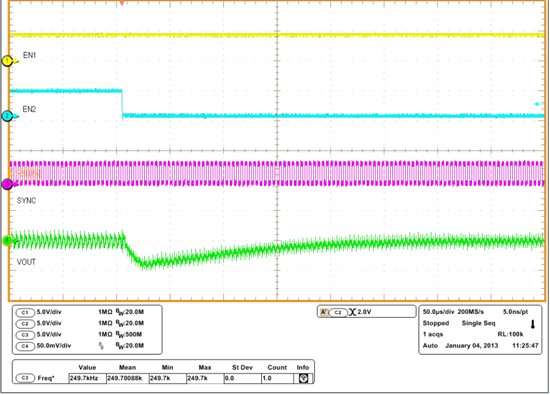Hi,
I want to use several LMZ22010 dc/dc-converters, controlled by a central power sequencer and clocked from a central clock synthesizer.
Questions:
- while EN is kept low, how does the module handle SYNC? Is it ignored, or does it have to have a certain behavior?
- if SYNC has been constantly high for a while, and then returns to a valid clock signal, will the converter resume switching?
- is it a good idea to use spread spectrum modulation on SYNC (500KHz nom. +- 10%)?
Thanks a lot



